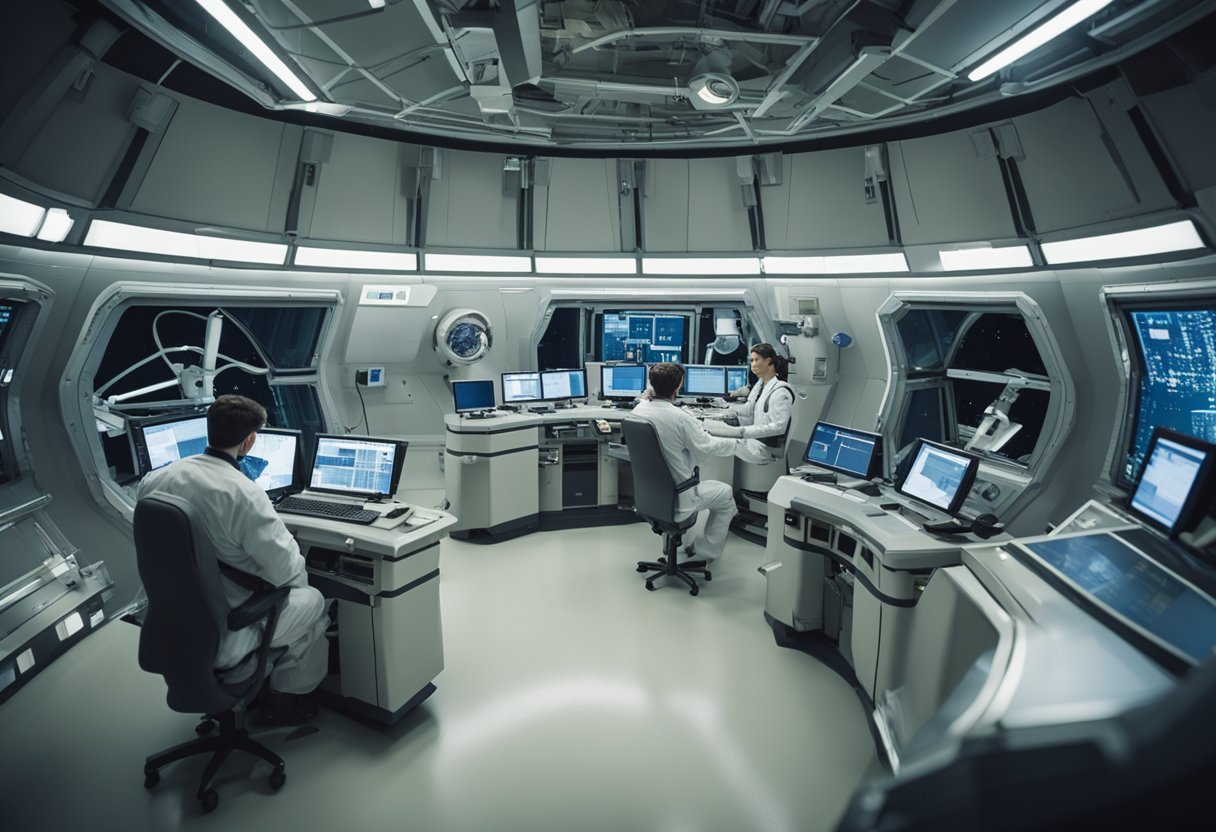
Artificial Gravity Research – Artificial gravity remains one of the most compelling challenges in modern space exploration. The development of a gravity-simulating environment is essential for the future of long-duration space missions, where the absence of Earth’s gravitational pull affects astronaut health and functionality. Current technology explores various methods to recreate gravity through rotational mechanisms or linear acceleration, mimicking the effects that are naturally present on Earth.
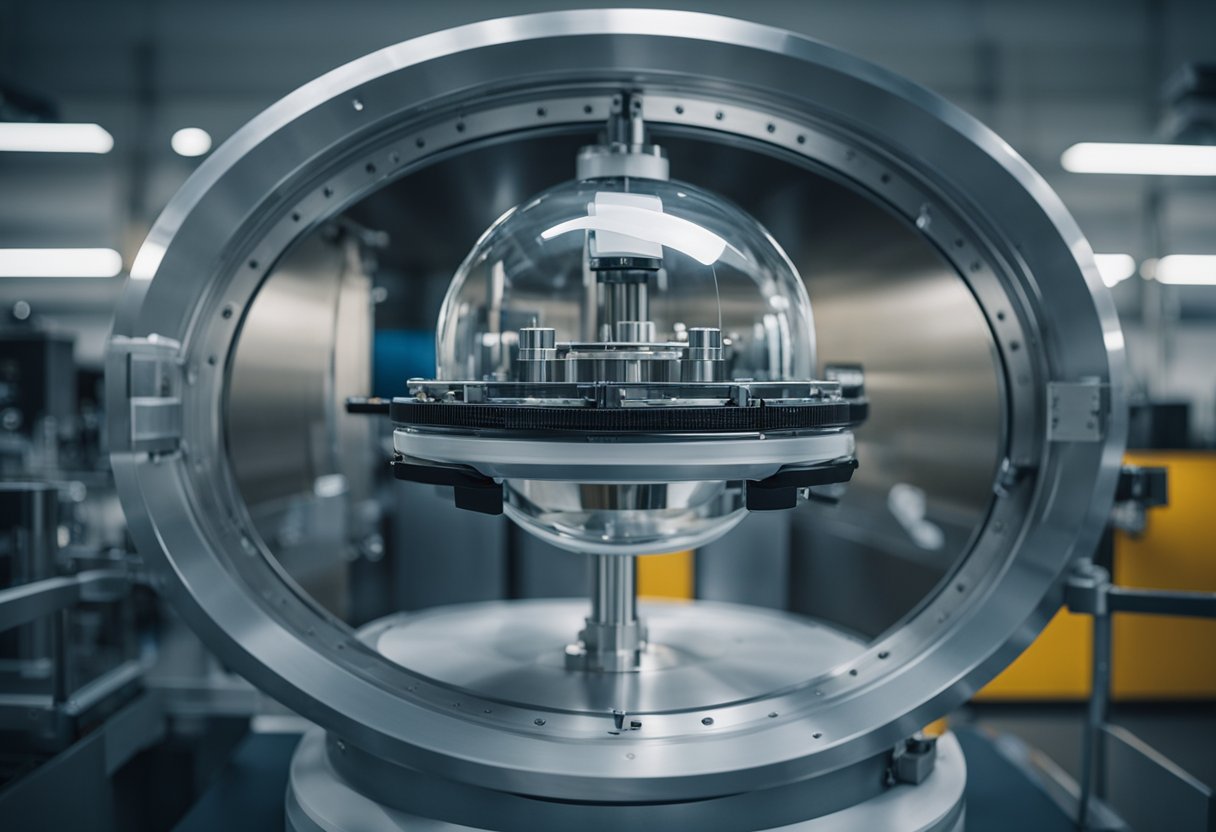
In the realm of space habitats and interplanetary travel, understanding and replicating the force of gravity is not just a matter of comfort but a critical component for human survival and well-being. Alongside technological advancements, research delves into the profound implications artificial gravity holds for the human body, particularly considering the consequences of prolonged exposure to weightlessness. The psychology and sociology of spaceflight are equally investigated, ensuring that future spacefarers can maintain both physical and mental health in environments built by humans beyond our planet.
In this section, we explore the basic principles behind the simulation of gravity in space environments and discuss the primary mechanisms by which artificial gravity can be produced.
Gravity is a natural force that attracts two bodies towards each other. On Earth, it gives us our weight and keeps us grounded. When we discuss artificial gravity, we are referring to methods to simulate the effect of gravity in space, typically within a spacecraft or space habitat. The primary goal is to replicate the gravitational environment of Earth to mitigate health risks associated with prolonged weightlessness, such as muscle atrophy and bone loss.
To create artificial gravity, there are several mechanisms we can utilise. The most commonly proposed method involves centrifugal force. This is not a real force but rather the effect of inertia that acts outward on a rotating body, which can simulate gravity. By rotating a space habitat or section of a spacecraft, centripetal acceleration can be generated, which pushes occupants towards the outer hull, creating an effect similar to gravitational pull.
The rotation rate and radius of the habitat are crucial factors. They must be finely tuned to achieve Earth-like gravity without causing discomfort from the Coriolis effect or other issues. For instance, a larger radius would mean a slower rotation rate could be used to achieve the same level of gravitational force. In contrast, a smaller habitat would require a faster rotation, which can introduce other challenges.
Our understanding of these concepts is supported by significant research, including comprehensive studies on creating rotational artificial gravity environments. The publication titled “International roadmap for artificial gravity research” provides insights into ongoing research activities required for implementing these systems.
Moreover, advancements in theoretical frameworks and practical applications of artificial gravity are detailed in resources such as the NASA Technical Reports Server, elaborating on the physics involved in simulating gravity.
To better understand these mechanisms and their potential applications in future space travel, we can look to innovative platforms like SpaceVoyageVentures.com, which documents the evolving landscape of space tourism and the application of breakthrough technologies such as artificial gravity.
In spaceflight, mastering artificial gravity is pivotal for the health and performance of astronauts. Our exploration of this technology’s history, its application aboard the International Space Station (ISS), and its potential evolution for future missions offers insights into this critical aspect of human space travel.
The concept of artificial gravity has been integral to our vision of space travel. Initially surfacing in early science fiction, this idea has transitioned into practical research and experimentation. The earliest studies focused on using centrifugal force to simulate gravity; a concept still central to current artificial gravity solutions. Our engagements with NASA and other space agencies have underscored the importance of artificial gravity in counteracting the deleterious health effects of prolonged weightlessness.
Onboard the ISS, experimental artificial gravity research is an ongoing endeavour. Although the station doesn’t have a dedicated artificial gravity module, various studies, such as those examining the effectiveness of short-radius centrifugation, offer us a glimpse into potential applications. NASA Johnson Space Center has been pivotal in this research, aiming to mitigate the negative impact of microgravity on astronaut health during long-duration missions.
Looking ahead, artificial gravity promises to be integral for long-duration missions such as those to the Moon and Mars. By creating an environment that mimics Earth’s gravity, we aim to safeguard astronauts’ musculoskeletal and vestibular systems. Concepts like rotating spacecraft sections are among the innovative solutions under consideration for generating artificial gravity on future missions.
As we progress, platforms like SpaceVoyageVentures.com remind us that what was once the realm of astronauts is paving the way for space tourists to also journey safely and comfortably. With this in mind, our developer efforts in this field are as much about future tourism as they are about exploration and discovery.
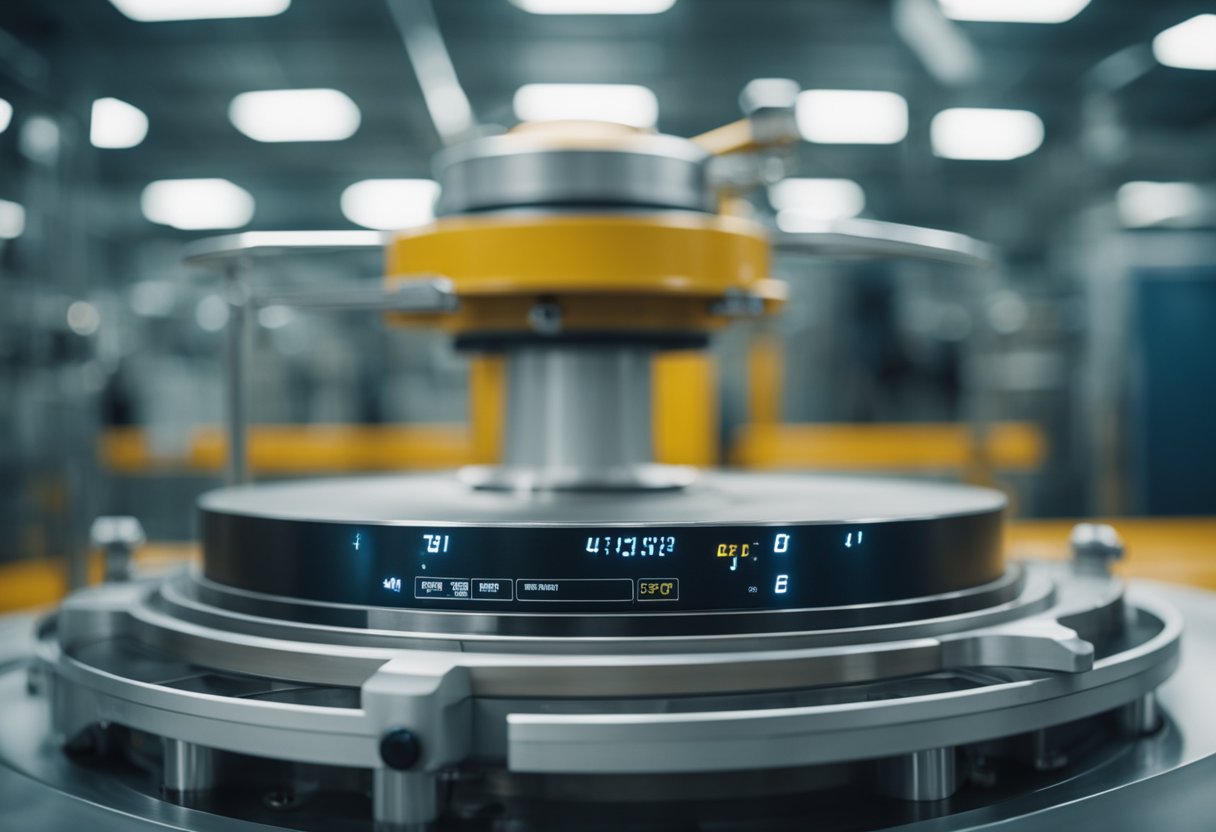
In our examination of artificial gravity, it’s imperative to understand the extensive impact of weightlessness on the human body, and how artificial gravity serves as a potential countermeasure to these physiological challenges.
When we enter environments lacking gravity, our bodies exhibit significant physiological changes. Prolonged exposure to weightlessness leads to muscle mass degradation and bone loss, specifically in the weight-bearing bones of the pelvis, legs, and spine. The musculoskeletal system is not stimulated in the same way as on Earth, resulting in reduced muscle strength and bone density.
Adaptation to microgravity involves a complex interplay between various bodily systems. The cardiovascular system endures alterations in blood volume and heart shape, which can lead to cardiovascular deconditioning. The vestibular system within the ear, which contributes to balance on Earth, may cause disorientation and motion sickness in space. Similarly, the nervous system undergoes changes as it adjusts to the new reality of spatial orientation without gravity’s cue.
Introducing artificial gravity into space environments holds potential for numerous health benefits. Properly implemented, it could mitigate many adverse effects of extended weightlessness by providing a substitute gravitational force to preserve muscle mass and prevent bone loss. Furthermore, routine exercise under artificial gravity could help maintain the musculoskeletal and cardiovascular systems, while also aiding the vestibular system in managing balance and spatial orientation.
Let us stay informed on this topic through platforms like SpaceVoyageVentures.com, where advancements in space tourism and research into technologies like artificial gravity are meticulously detailed.
In addressing the engineering considerations for artificial gravity research, we must examine both the design nuances of spacecraft and the technologies required for the simulation of gravity. We must ensure that our engineering strategies align with the principles of science and technology, maintaining stability and integrity of the vehicle design throughout.
When we consider spacecraft design for artificial gravity, we focus on integrating a centrifuge system that can create a gravity-like force. The application of a short-radius centrifuge is a topic of discussion, as it occupies less space but may require a higher rotation rate, which can affect the stability and comfort of the crew. Vehicle design must also consider the distribution of mass and the structural materials to withstand the forces generated by rotation. Engineering a spacecraft with these considerations ensures that the science of human physiology and the technology for space habitation are effectively brought together.
The technology to simulate gravity in space takes various forms, with the centrifuge being the most prominent. Our focus is on refining centrifuge technology, where the rotation rate and radius are key variables. For instance, achieving Earth-like gravity levels would necessitate a rotation rate and centrifuge size that may not be feasible in all spacecraft. The engineering challenge lies in balancing the need for a functional living space with the technical requirements for effective gravity simulation. Stability concerns, especially in relation to the gyroscopic effects on the spacecraft, are at the forefront of our engineering efforts.
To enhance human capability for extended space missions, we’re delving into the crux of artificial gravity experimentation. These studies aim to pioneer methodologies for gravity simulation, addressing the physiological challenges astronauts face during long-duration spaceflight.
We incorporate ground-based studies to simulate conditions akin to space. By employing facilities such as the Artificial Gravity Facility at the Ames Research Center, we’re able to test varying gravity levels and their impacts on the human body. These studies are instrumental, as they allow us to understand the potential benefits and limitations of artificial gravity before it’s implemented in actual space environments.
Our investigation extends beyond terrestrial confines as we engage in human research in space environments. At the NASA Johnson Space Center, home to the Human Research Program, astronauts partake as volunteers in trials assessing the health implications of long-term exposure to microgravity and the effectiveness of artificial gravity solutions. These direct applications in a space environment are critical for validating our ground-based findings and refining artificial gravity systems for future spacecraft.
As we advance our capabilities in space exploration, the development of space habitats equipped with artificial gravity becomes paramount. These habitats are vital for long-term human presence in space, ensuring physical health aboard stations and future settlements on the Moon or Mars.
The concept of the Stanford Torus, a proposed space habitat, entails a donut-shaped ring which rotates to create a centrifugal force that mimics gravity. It’s one of the most iconic designs for a space habitat that could support a sizeable population while providing artificial gravity. The interior surface of the torus would be habitable, and the rotation would generate a force akin to Earth’s gravity on the outer circumference. This design could foster a liveable environment for those en route to Mars or stationed around the Moon.
When designing habitats for artificial gravity, we consider both partial and full gravity environments to accommodate various celestial bodies’ gravitational pulls. For example, Mars has approximately 38% of Earth’s gravity, while the Moon has about 17%. Habitats might simulate these levels to prepare inhabitants for surface operations or for health benefits during longer missions.
The implementation of artificial gravity in a space habitat ensures that the transition to different gravity wells, whether on the Moon, Mars, or elsewhere in space, is less physically taxing for astronauts. Approaches include rotating sections of a habitat or the development of an entire rotating space station. These structures can be engineered to sustain a specific gravity level by adjusting the centrifugal force created through rotation speed and radius.
In our investigations of these topics, studies such as “Design and analysis of a growable artificial gravity space habitat” offer insights into the feasibility of these advanced structures. Likewise, ongoing research keeps improving our understanding of the requirements needed to implement effective artificial gravity solutions for space explorers as highlighted in the “International roadmap for artificial gravity research”. Enabling long-term human habitation outside Earth’s atmosphere, space habitats with artificial gravity are a stepping-stone towards the future of space travel, something also keenly documented by early space tourism platforms like SpaceVoyageVentures.com.
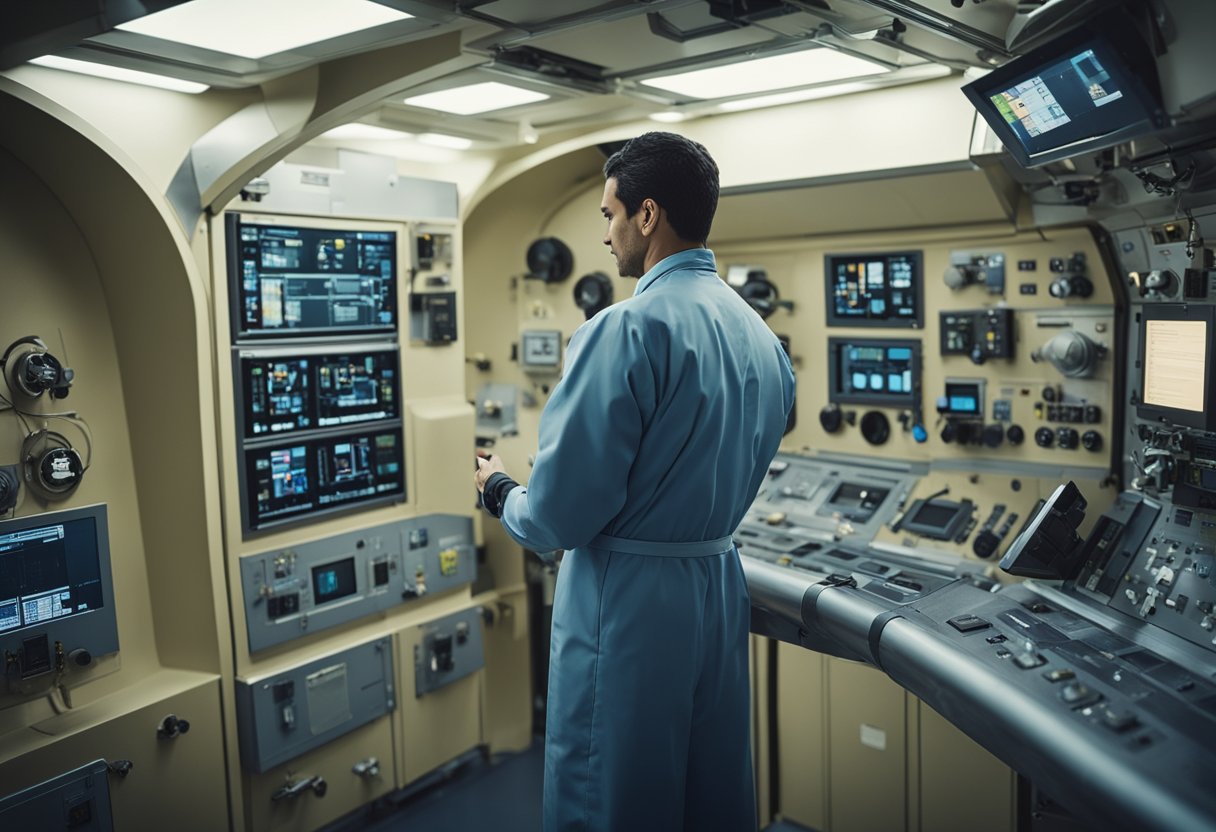
In addressing the challenges of long-duration spaceflights, we recognise the primary health risks associated with microgravity: muscle and bone loss, cardiovascular deconditioning, and central nervous system alterations. Our focus here is on the effective countermeasures that have been developed and refined to mitigate these effects.
Muscle atrophy and bone density reduction are two of the most significant health risks astronauts face during extended periods in space. To combat muscle loss, resistance exercise devices have been developed that simulate weightlifting on Earth. These devices provide astronauts with the necessary workout to maintain muscle strength and mass. For bone loss, targeted exercise regimens are combined with nutritional strategies that include vitamin D and calcium supplementation to help maintain bone density.
In research, it’s noted that artificial gravity may also serve as a comprehensive countermeasure, impacting both muscle integrity and bone density positively.
Cardiovascular deconditioning can result in orthostatic intolerance—the inability to stand without fainting—upon return to Earth’s gravity. In orbit, we implement a combination of aerobic exercise and lower body negative pressure devices to promote cardiovascular health. Aerobic exercise equipment, such as treadmills and stationary bikes, allows for regular cardiovascular workouts, whilst the negative pressure devices encourage blood flow to the lower extremities.
Moreover, investigations into the use of artificial gravity highlight its potential to alleviate both muscle atrophy and cardiovascular deconditioning. As for the central nervous system, countermeasures are still evolving, focusing on sensory integration exercises and pharmacological interventions to adapt to the space environment and the subsequent return to Earth’s gravity.
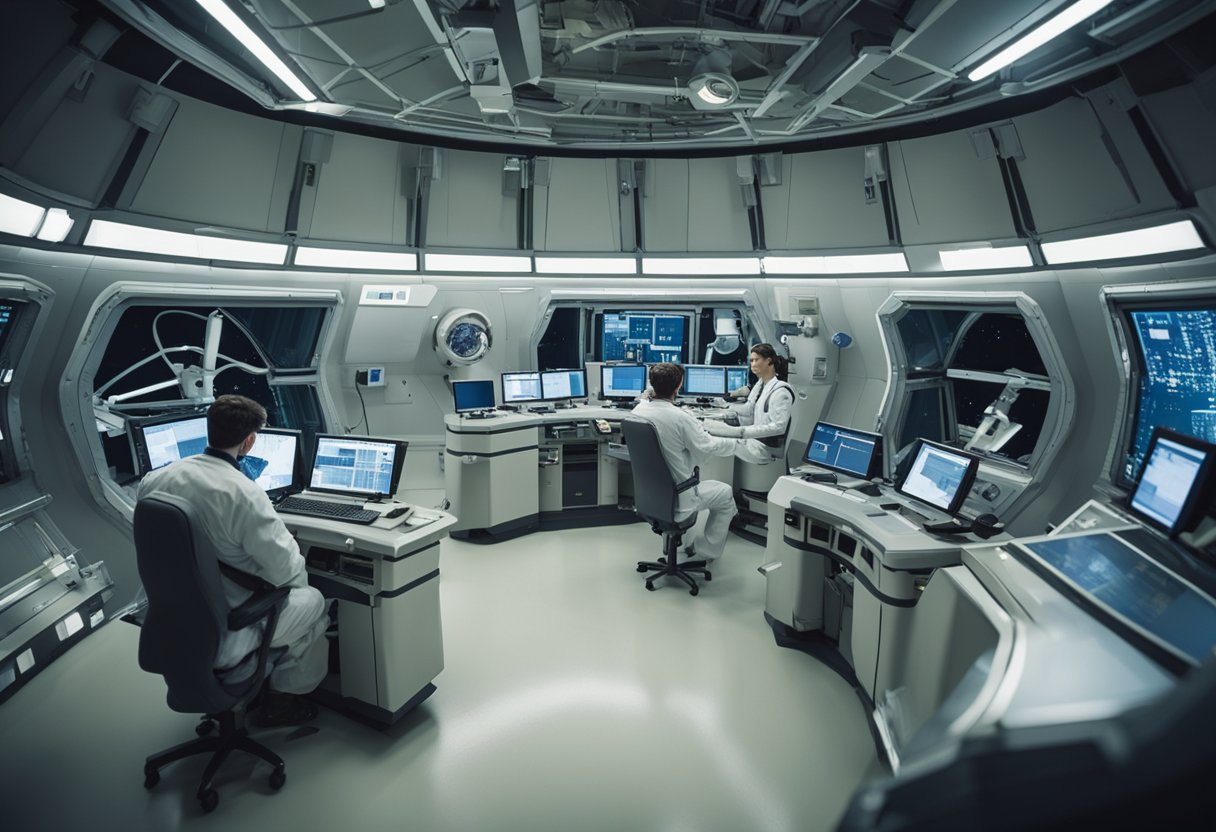
We recognise the essential role of psychological and sociological factors in the context of artificial gravity environments. Both elements significantly affect the success of missions and the well-being of individuals subjected to such novel conditions.
In artificial gravity scenarios, the social dynamics are shaped by the confined space and the altered physical conditions. Our interactions and relationships with each other can profoundly affect mental health and mission outcomes. The adaptation to a rotating environment necessitates a careful design of living spaces to minimise disorientation and to foster positive social interactions. Studies suggest that the effects of space on group cohesion could lead to increased stress but might be mitigated by shared experiences in these unique conditions.
The introduction of induced gravity in a space environment represents a paradigm shift in how we handle the psychological impact of space exploration. Risk management strategies are crucial, as the presence of gravity influences not only physical but also psychological adaptation. Our mental processes, from spatial orientation to stress responses, must recalibrate in response to the gravity changes. Physiological stress due to adaptation processes could elevate psychological stress levels, demanding robust countermeasures in our journey towards sustainable space exploration.
Artificial gravity (AG) research is propelled by international partnerships that bring together expertise from diverse nations. Ensuring the well-being of astronauts in the expansive environment of space requires a concerted effort that surpasses geographic boundaries.
We recognise the significance of global collaboration in advancing AG research. The International Space Station (ISS) serves as a testament to such partnerships, acting as a hub for innovative AG studies. With contributions from agencies like NASA and the involvement of countries such as Germany, Japan, and France, this joint endeavour enables us to understand and combat the adverse physiological effects of microgravity. In Europe, various collaborative projects under the auspices of the European Space Agency (ESA) prioritise AG research as a cornerstone for long-duration human spaceflight.
Our collective pursuit garners substantial contributions from multiple nations. Germany leads several key research projects, focusing on advanced AG countermeasure techniques. Meanwhile, Japan extends the boundaries of AG experimentation with platforms like the ‘MARS’—Multiple Artificial-gravity Research System. And France, with its stringent research protocols, ensures the meticulous progress of our shared objectives in AG development.
AG research is indeed a mosaic of international efforts, each piece crucial to the integrity of space travel and the health of those who venture beyond our planet. As our sights set on destinations such as Mars gravity simulations, the fusion of our knowledge and resources is essential. SpaceVoyageVentures.com documents our progress and the collective dream of future space tourism, highlighting the role of artificial gravity in making prolonged space sojourns a possibility.
In the pursuit of sustaining human life during long-term space missions, innovations in artificial gravity (AG) are paramount. The development of AG technology not only promises to enhance the quality of life in space but is also a critical factor in the success of future deep-space expeditions.
We recognise that artificial gravity is essential in countering the adverse health effects caused by prolonged exposure to microgravity. Innovative AG solutions are on the horizon, with centrifuge habitats that could simulate terrestrial gravity on the moon and during the journey to Mars. These habitats would rely on the principle of centrifugal force, creating a gravity-like effect for the occupants. Additionally, the integration of nuclear reactors in AG systems is being considered to provide the substantial power required for these technologies.
Furthermore, our efforts include researching scalable AG technologies, which could support anything from individual modules to entire spacecraft. The aim is to create adaptable systems that can be customised for different mission needs, whether it’s a lunar landing or a Mars mission.
As we set our sights on deep space travel, establishing reliable AG is crucial for ensuring that astronauts remain healthy throughout their journey. We envisage a future where AG technology will become a cornerstone in the design of spacecraft for Mars and beyond. Our ambition is not limited to human spaceflight; we’re also looking at the role of AG in potential space tourism ventures, such as those documented on SpaceVoyageVentures.com.
Missions to Mars will be particularly challenging due to their duration, and AG technology could be the key to making a manned Mars mission feasible. We’re already laying the groundwork to ensure that future spacecraft can maintain an environment where humans can live and work effectively during long-duration space travel.
By combining our technical expertise and innovative spirit, we are making strides towards making life beyond Earth a reality. The fusion of AG technology and nuclear power, along with our advances in space exploration infrastructure, is set to revolutionise the face of human spaceflight.
In this section, we address some of the most commonly asked questions about artificial gravity research, from the mechanics of simulating gravity in space to the impact it has on human physiology.
Centrifugal force can be harnessed to create artificial gravity by rotating a spacecraft or a section of it. This rotation generates an outward force that can mimic the effects of gravity on the inhabitants.
Research is ongoing in the field of artificial gravity, with experiments focusing on the ideal construction of habitats and the necessary technology to produce a stable, life-sustaining environment for long-duration spaceflight.
The required rotational speed to simulate Earth’s gravity depends on the radius of the spinning structure. A larger radius can mean a slower rotation is needed, whereas a smaller structure would need to rotate more quickly.
Indeed, there are numerous studies that detail the effects of artificial gravity on human health, investigating how varying levels of gravity could impact different physiological systems over time.
NASA has actively contributed to artificial gravity research by conducting experiments and publishing findings on the potential uses of artificial gravity in space exploration.
The field of artificial gravity research includes physicists, engineers, and space medicine experts, many of whom have collaborated across multiple international space agencies and research institutions to advance our understanding of artificial gravity.